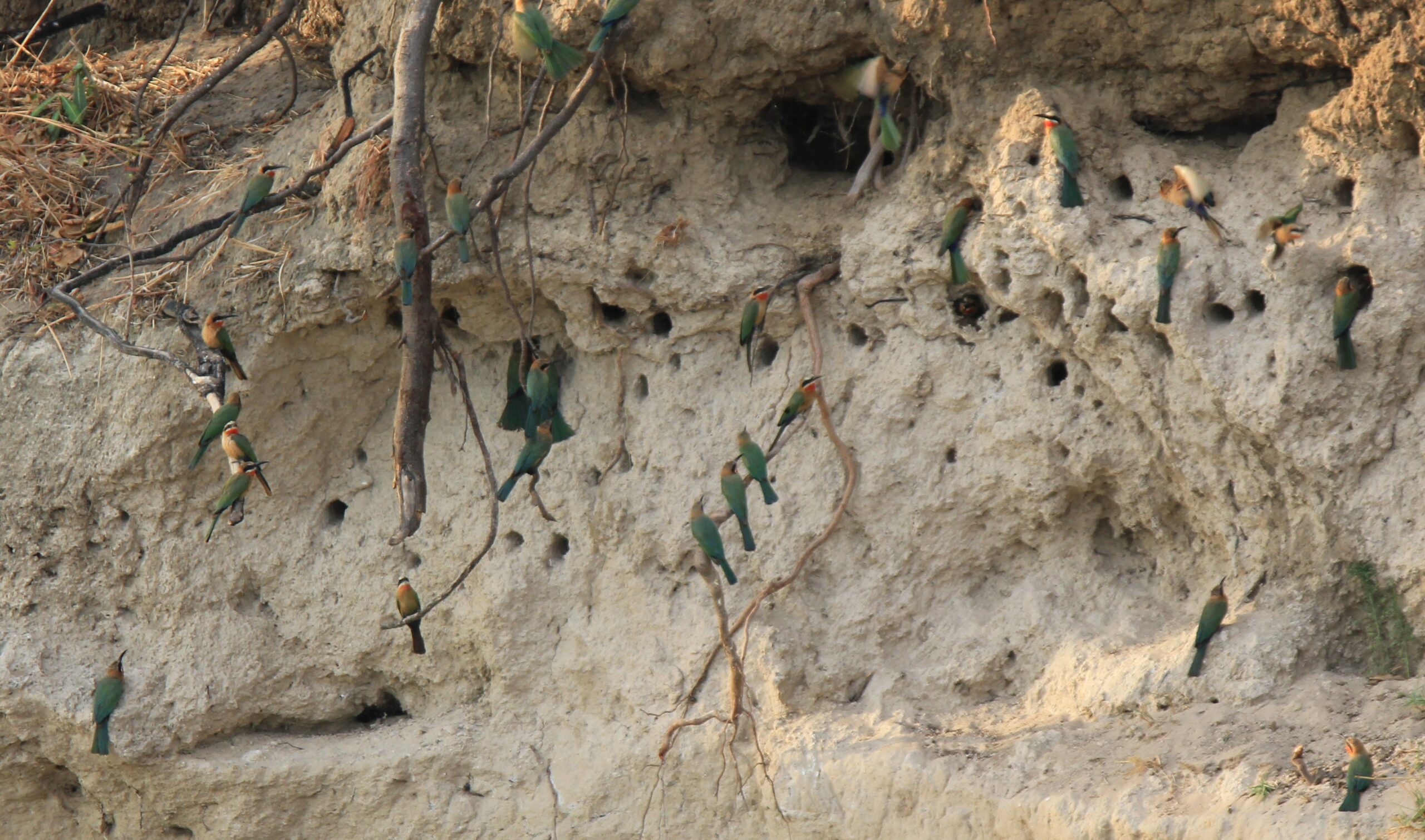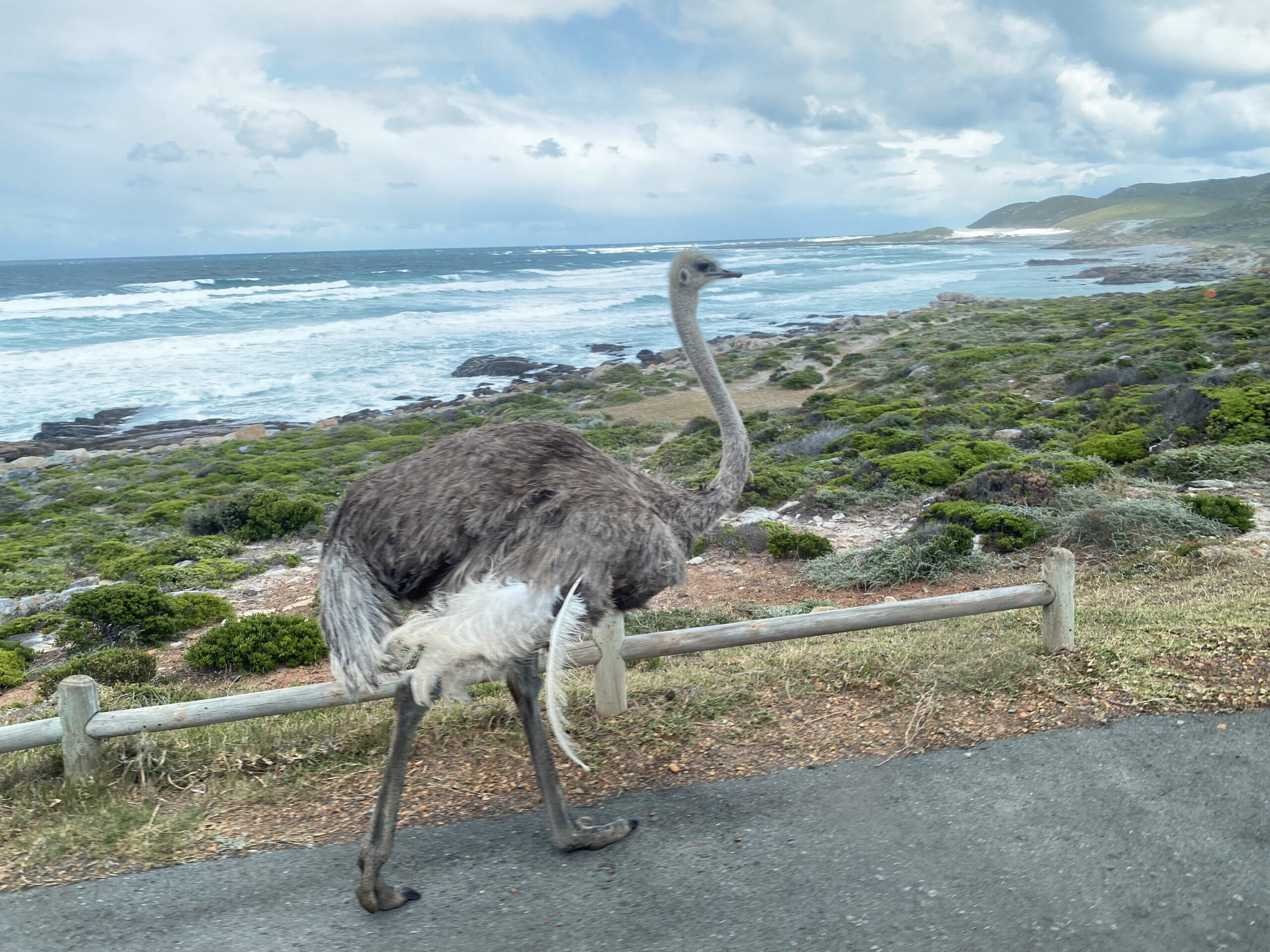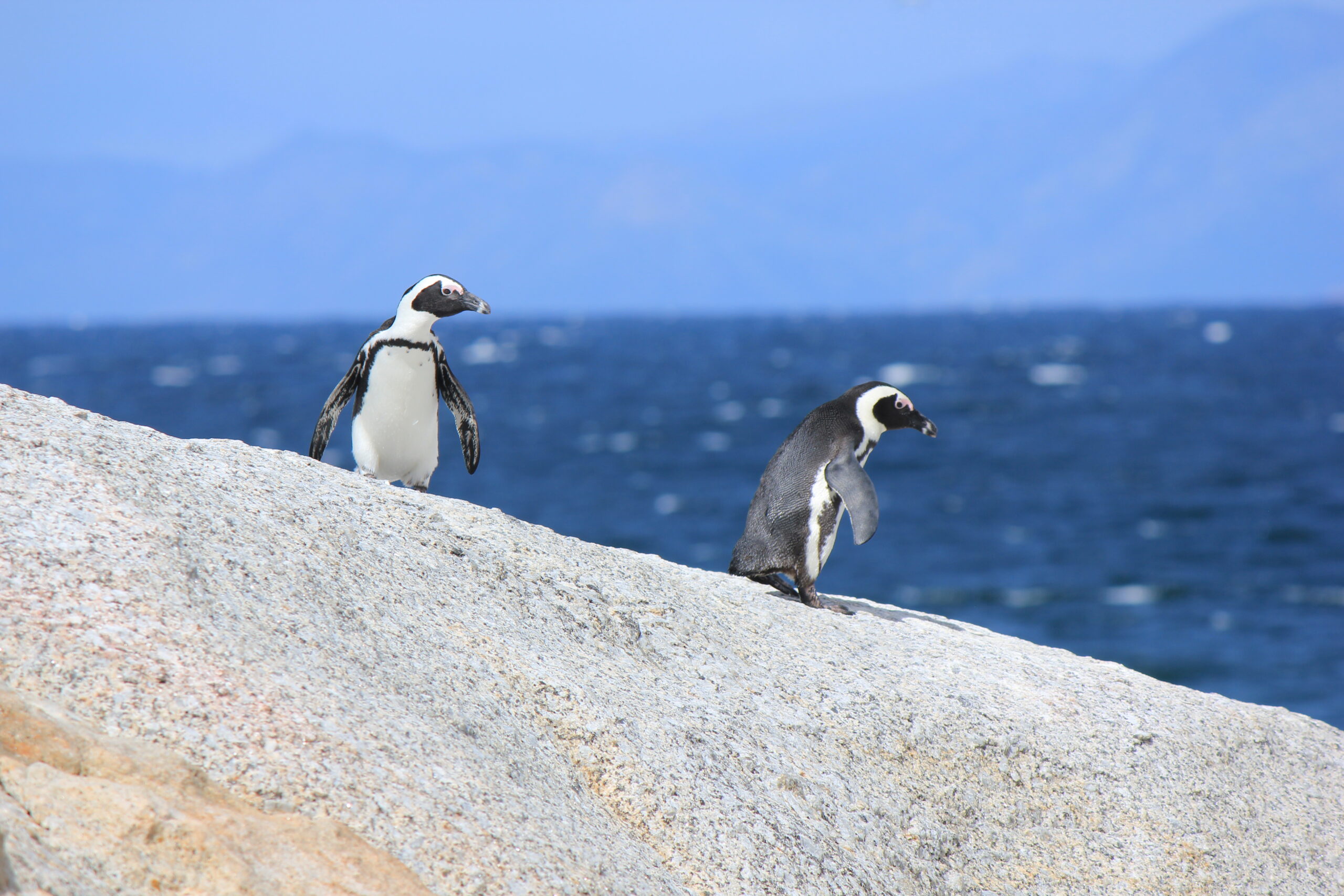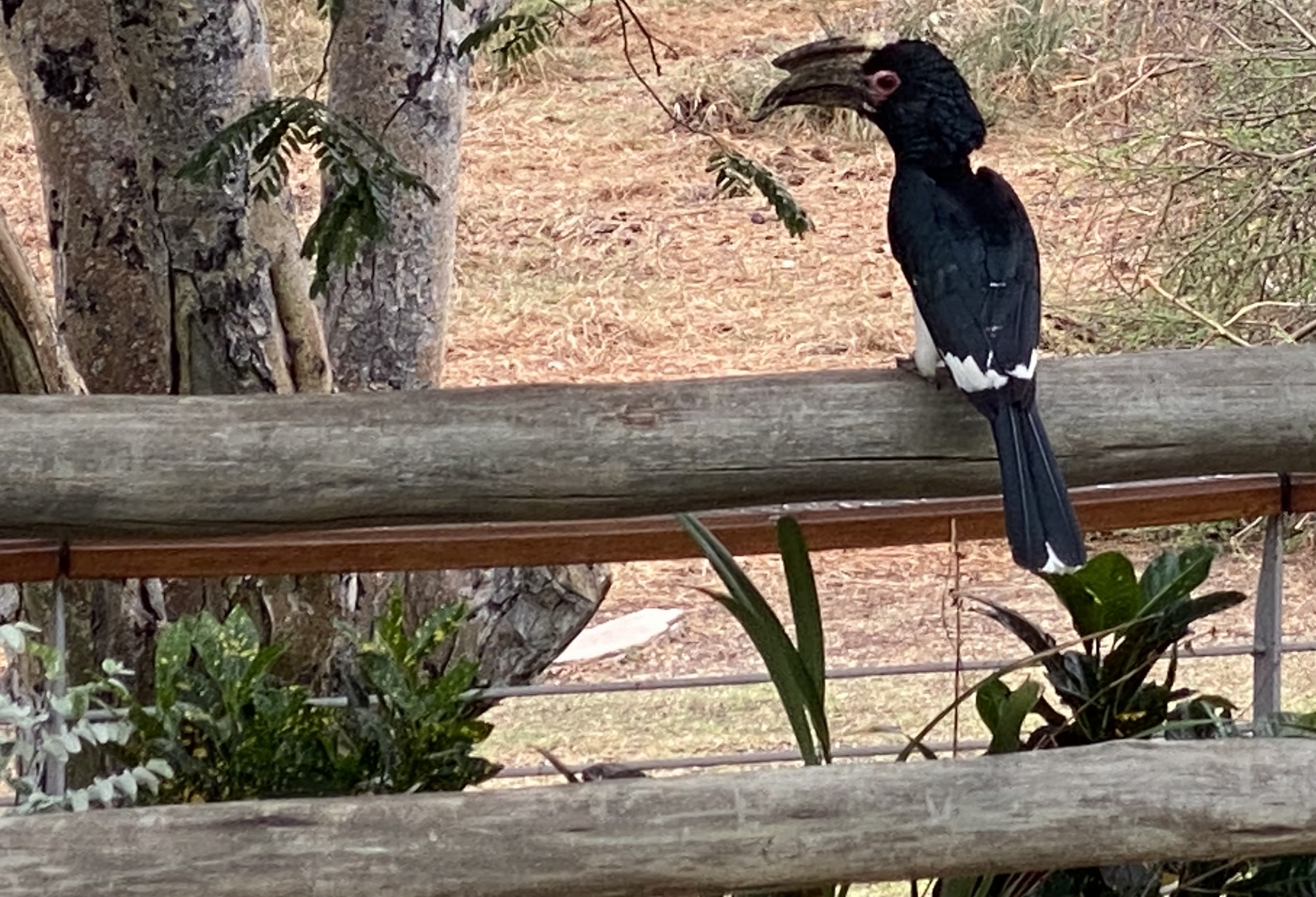
South Africa is home to an incredible variety of birdlife.
Yet one bird truly stands out as a symbol of power, adaptability, and peculiarity: the ostrich.
In this blog, we’ll focus mainly on the world’s largest bird, while giving a nod to 3 other unique avian species that make South Africa’s birding experience unforgettable: the Southern masked weaver, the African penguins, and the hornbill.
Ostrich: The Flightless Giant
The Ostrich is not just South Africa’s most iconic bird, but also the largest and heaviest bird on earth.
Adult ostriches can weigh 220–350 lbs (100 and 160 kg) for males, and 200–265 lbs (90 to 120 kg) for females.
Standing up to 9 feet tall (2.8 meters), they tower over most other animals on the savanna.
Their eggs are equally record-breaking, weighing up to 3 lbs (1.4 kg) – the largest of any living bird.
Although they cannot fly, ostriches are unmatched on land.
They are the fastest two-legged runners in the animal kingdom, capable of sprinting at speeds of up to 43 mph (70 km/h).
They use their long, powerful legs not only for running but also as formidable weapons.
A single kick from an ostrich can be deadly to potential predators like lions.

Ostriches Have Giant Eyeballs
Ostriches also have some of the largest eyes of any land animal – each eye is about the size of a billiard ball.
These enormous eyes give them excellent vision, which is crucial for spotting predators across vast, open landscapes.
Despite their inability to fly, ostriches make dramatic use of their wings during courtship rituals.
Males perform elaborate dances, fanning their feathers and bowing low in an attempt to impress cute females.
Once paired, the female lays her eggs in a communal nest, often shared by multiple females, and the dominant male and female take turns incubating them.
Ostriches Are Well Adapted To Their Harsh Environment
Ostriches are perfectly suited to hot, dry environments.
They can survive without water for days, obtaining moisture from the plants and fruits they eat.
Their diet is omnivorous, ranging from seeds and grasses to insects and small reptiles.
Historically, ostrich feathers were prized in fashion, while their leather remains one of the most durable and luxurious materials in the world.
Eggs are either used in cuisine or in art.
Today, ostrich farming is a thriving industry in South Africa, producing meat, leather, eggs, and feathers, while wild ostriches continue to roam freely in protected reserves.
Southern Masked Weaver, Nature’s Architect
The Southern Masked Weaver is a small bird with a big reputation.
Males construct intricate, woven nests from grass and reeds, suspended from tree branches.
These nests are works of art, yet females are notoriously picky.
If she doesn’t approve, the male must start all over again—a relentless cycle of craftsmanship and courtship.

African Penguins, The Tuxedoed Swimmers
The African Penguin, often called the “jackass penguin” for its donkey-like bray, is the only penguin species native to Africa.
Found along South Africa’s coastline, these charming seabirds are expert swimmers, using their wings as flippers to “fly” underwater at speeds up to 12 mph (20 km/h).
Sadly, they are endangered, but conservation efforts are helping stabilize their numbers.

The Hornbill, The Entertainer of the African Bush
Remember Zazu, the main bird character in the Lion King movie?
He is an African red-billed hornbill, instantly recognizable with its large, curved beak.
These birds are famous for their unusual nesting strategy.
The female seals herself inside a tree cavity with mud, leaving only a narrow slit through which the male delivers food.
This remarkable adaptation keeps predators at bay while she incubates her eggs.

South African Birding Paradise
Ostriches may fascinate by their size, speed, and resilience, but smaller birds add diversity to the story of South Africa’s avian treasures.
Together, they create a living tapestry that makes the region one of the world’s most remarkable destinations for bird lovers.
We can’t help your ostrich, but if you would like to learn how we can help your cat or your dog with safe surgery and anesthesia, please contact us through www.HRVSS.com
Never miss a blog by subscribing here: www.HRVSS.com/blog
Phil Zeltzman, DVM, DACVS, CVJ, Fear Free Certified
www.HRVSS.com
